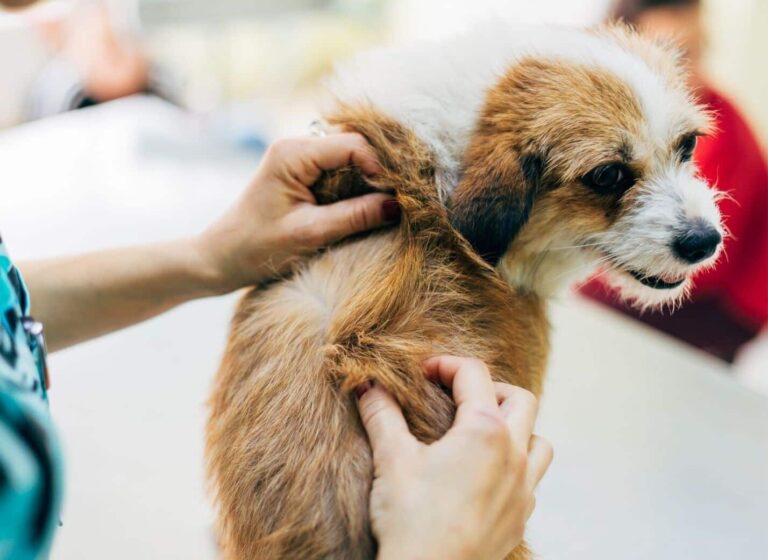If you’ve ever found yourself wondering, “Can dogs get lice?”—you’re not alone. Many pet parents worry about every little critter that might latch onto their furry best friend. Let’s cut through the noise, debunk outdated myths, and get straight to actionable advice.
Understanding Dog Lice: The Real Deal
Yes, dogs can get lice—but before panic sets in, know that these pests are very species-specific. Dog lice, unlike the head lice you might hear about in humans, have evolved to live on canines only. This means they’re not the same pests you’d worry about when brushing your hair. They’re usually chewing lice that feed on dead skin and debris rather than sucking blood, which means the infestation might look different than what you expect from other parasites.
Bold truth: Lice in dogs are not as common as fleas or ticks, but when they do appear, they demand attention.
How Do Dogs Get Lice?
Transmission is key. Lice are spread primarily through direct contact. Think of dog parks, shelters, or even a close encounter with an infested canine during playdates. Sharing bedding or grooming tools can also be culprits.
- Close Contact: Dogs that socialize in groups or are in boarding facilities have a higher risk.
- Poor Grooming: A lack of regular grooming makes it easier for lice to establish themselves.
- Overlooked Infestations: Sometimes, what appears to be simple dandruff or dry skin can actually be lice—if you’re not vigilant, you might miss the early signs.
A friend of mine once overlooked his dog’s excessive scratching as just a bout of “normal pet behavior.” It wasn’t until a thorough check-up revealed an infestation that he realized the importance of regular grooming and inspection.
Spotting the Signs: What to Look For
Not every itchy dog has lice, but here are some red flags that should prompt a closer look:
- Persistent Itching: More than just occasional scratching—if your dog seems unable to get comfortable, it might be a lice issue.
- Red, Inflamed Skin: Constant scratching can lead to irritation and open wounds.
- Bald Patches: Areas with thinning hair or obvious spots where the hair seems sparse.
- Visible Insects or Eggs: Although small and easy to miss, a good look with a fine-tooth comb might reveal tiny bugs or nits attached to the hair shafts.
Don’t wait: Early detection means a lot less hassle when it comes time for treatment.
Common Mistakes and Outdated Ideas
There are plenty of myths out there about treating dog lice. Here are the ones you need to challenge:
- “It’s just fleas, not lice.”
Many pet owners mistakenly treat any skin irritation as a flea problem. While fleas are more common, dog lice require different treatments. Confusing the two can lead to ineffective care. - “Human lice shampoos work on dogs.”
This is a dangerous assumption. Dogs have sensitive skin, and using products not formulated for them can worsen the problem or cause allergic reactions. - Over-Reliance on Home Remedies:
Natural remedies can sometimes offer relief, but they rarely address a full-blown lice infestation. Stop wasting time on outdated ideas—when it comes to lice, professional veterinary advice is crucial. - Neglecting Environment:
Focusing solely on the dog without addressing the living environment (bedding, grooming tools, etc.) can lead to re-infestation.
Real-life experience teaches us that a comprehensive approach—treating your pet while also cleaning their surroundings—is key to effective control.
Actionable Steps to Treat and Prevent Dog Lice
1. Veterinary Diagnosis is a Must
- Before starting any treatment, get a proper diagnosis from your vet. They can confirm if it’s lice or another issue like allergies or mites.
2. Use the Right Treatments
- Prescription Shampoos or Dips: Your vet may recommend specific insecticidal shampoos or dips that are safe for your dog.
- Topical Medications: Sometimes spot-on treatments designed for lice or other parasites can be effective.
- Follow Directions: Always follow dosage instructions exactly. Over or under-dosing can lead to treatment failure or adverse reactions.
3. Clean Your Dog’s Environment
- Wash Bedding: Regularly launder your dog’s bedding in hot water to eliminate any lingering lice or nits.
- Sanitize Grooming Tools: Clean combs, brushes, and other grooming equipment after every use.
- Vacuum Frequently: Keeping your home clean minimizes the chances of lice re-infestation.
4. Regular Grooming and Checks
- Routine Inspections: Make it a habit to check your dog’s coat regularly, especially after social outings.
- Grooming Sessions: Regular baths and brushing not only keep your dog looking good but also help spot any potential infestations early.
Prevention is Better Than Cure
Stop waiting until your dog is suffering before taking action. Preventative measures are your best bet:
- Limit Unnecessary Contact: Be cautious in environments where lice could easily spread.
- Educate Yourself: Stay updated on the best practices and new treatments as recommended by veterinarians.
- Maintain a Clean Home: A little extra cleaning goes a long way in keeping your pet safe from parasites.
Final Thoughts
Dog lice might not be the first thing on your radar, but they deserve attention. By debunking myths, avoiding common mistakes, and taking a proactive approach, you’re ensuring your canine companion stays healthy and comfortable. Remember, your dog’s well-being is non-negotiable—don’t settle for outdated advice or ineffective treatments.
Take action now. Check your dog’s coat regularly, maintain a clean environment, and consult your vet at the first sign of trouble. Your best friend deserves nothing less.


